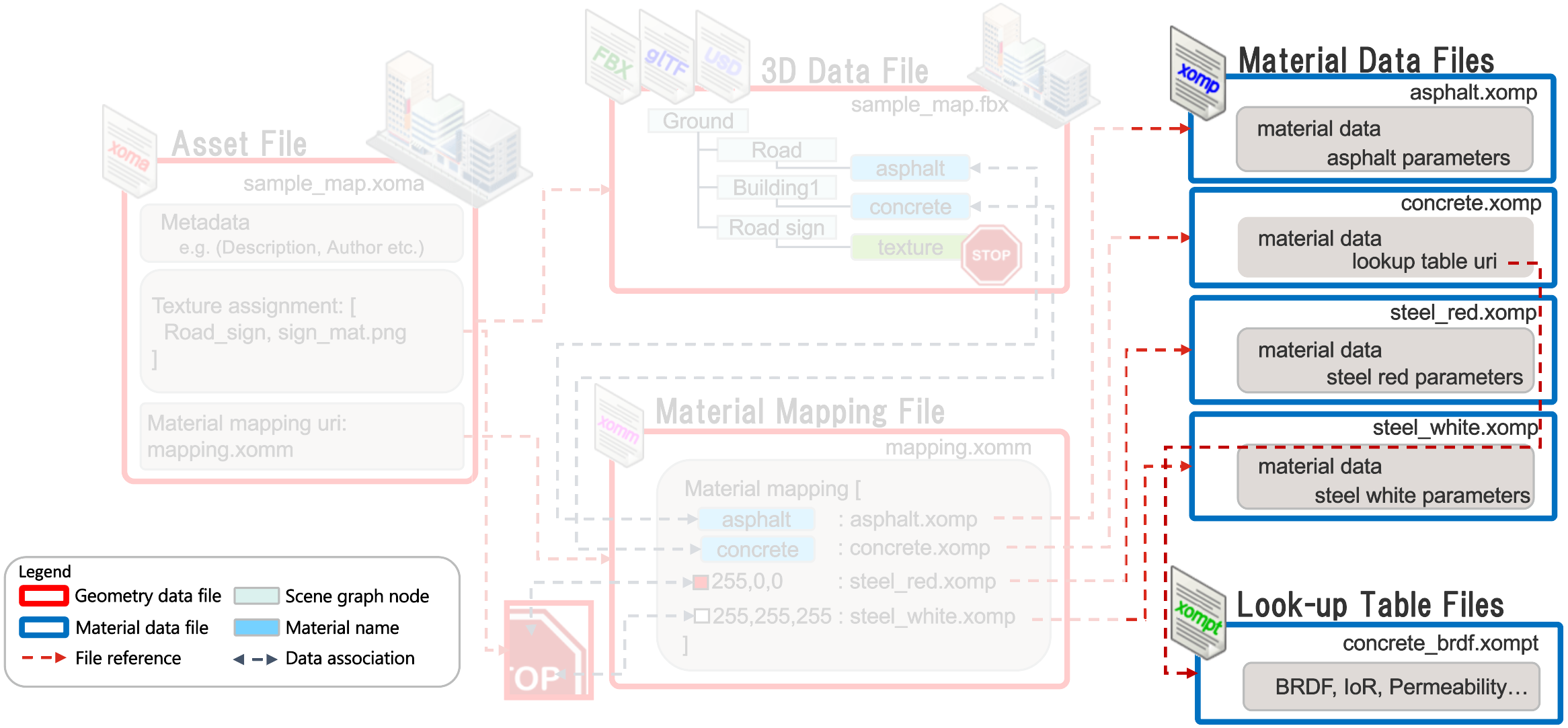8.1 Introduction
8.1.1 Motivation
In virtual environments and simulations, the accurate representation of materials plays a critical role in achieving realism and ensuring proper interaction between objects and perception sensors. Material properties, such as roughness, permittivity, and index of refraction, influence how sensors like cameras, radars, and lidars perceive and interact with objects. However, existing formats for materials in 3D models lack a standardized way to represent and manage multi-spectral materials, which can lead to inconsistencies in simulation scenarios and are not exchangeable between simulation tools.
The ASAM OpenMATERIAL standard addresses this gap by providing a robust framework for defining materials in a way that is comprehensive, multi-spectral, and interchangeable.
This chapter includes all material definitions of ASAM OpenMATERIAL, marked in blue in Figure 55.
The first point of contact with a material is the Material Data File (for example, "my-material.xomp"). This file contains metadata as well as basic material properties, such as roughness or density. The Material Data File may link one or multiple wavelength-dependent Look-up Table Files (.xompt). There are different kinds of look-up tables:
-
Electromagnetic properties (*_emp.xompt) containing complex permeability and permittivity values
-
Optical properties (*_optical.xompt) containing complex index of refraction values
-
BRDFs (*_brdf.xompt) containing bidirectional reflectance distribution values
-
Reflectance (*_reflectance.xompt) containing reflectance values

8.1.2 Applications
ASAM OpenMATERIAL materials are particularly useful in a variety of scenarios where material properties are critical for realistic simulations and interactions. Some key use cases include:
-
Accurate simulation of sensor perception: To simulate sensors in virtual environments, the material properties of objects must be accurately defined. These definitions require wavelength-dependent multi-spectral material definitions, as various sensor types perceive the environment differently.
-
Material reusability across platforms: To ensure consistency in simulations, 3D assets including their material data must be reusable across different tools and platforms. Therefore, material definitions need to be compatible and portable, allowing the same materials to be used in various simulation environments without requiring rework or translation.